Chichen Itza is an astonishing Mayan ruin located in the Yucatan and is One Of The Seven Wonders Of The World. Many tourists on the east coast of Mexico will visit Chichen Itza. Not visiting a Mayan ruin while in Mexico is like not enjoying a cerveza in the hot mid-day sun. We will present to you our reader Chichen Itza Your Complete Guide The Truth.
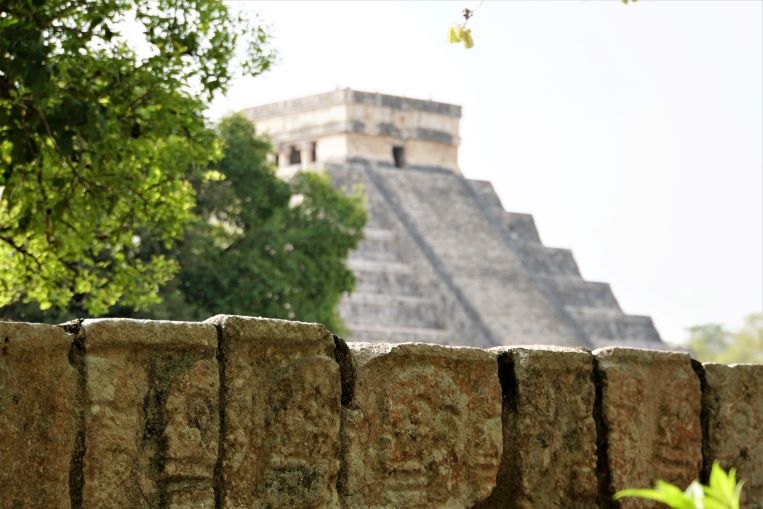
Flight + Hotel Deals: Save on Mexico, the Caribbean & more!
History Of Chichen Itza
The sacred site of Chichen Itza is one of the greatest Mayan centers of the Yucatán peninsula. During its 1,000-plus-years of history, different peoples/cultures have left their mark here. Together, the Mayan and Toltec vision of the world and the universe is revealed in the stone monuments and artistic works they left behind here in Chichen Itza.
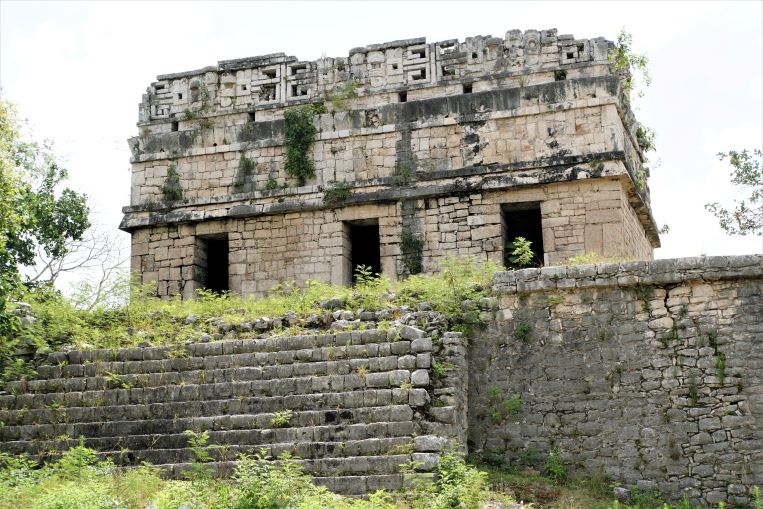
Chichen-Itza is constructed near two cenotes, which gave the city its name, chi (“mouths”), chen (“wells”) “At the edge of the well of the Itzaes.” This Mayan settlement dates back to the 5th century, but no one is certain of exactly when. Chichen Itza was an important center of political and economic activity in the Mayan culture in roughly 600 A.D. The city grew and possessed many well-known monuments. These include the Nunnery, the Church, Akab Dzib, Chichan Chob, the Temple of the Panels, and the Temple of the Deer, all built between the 6th and the 10th centuries in the Puuc style.

The second settlement at Chichen-Itza resulted from the invasion of the Toltecs in the 9th century. King of Tula, Ce Acatl Topiltzin Quetzalcoatl, or Kukulkan as the Maya translated the name, reportedly defeated the city. This Toltec invasion did not diminish the power of Chichén Itzá but reinforced and enriched it. Consequently, a new technique blending both Maya and Toltec traditions developed. Several symbolic buildings were erected in this period, such as the Pyramid of Kukulcán, dedicated to the Feathered Serpent (Quetzalcóatl) brought by the Toltecs. Chichen Itza reached its greatest glory in the 11th-12th centuries. However, half a century of violent conflicts led to a civil war that led to this great settlement’s eventual downfall and abandonment.

Consequently, after the 13th century, no major monuments appear to have been constructed at Chichen-Itza. The city rapidly declined around 1440 A.D. These Chichen Itza ruins were not excavated until 1841 A.D.
- Cancun 250 km or 154 miles each way
- Playa Del Carmen 155 km or 96 miles each way
- Tulum 126 km or 78 miles each way
- Merida 115 km or 71 miles each way
- Progreso 157 km or 97 miles each way
- Valladolid 45 km or 28 miles each way
Chichen Itza Why You Need To Visit
Why you need to visit Chichen Itza? Chichen Itza is a once-in-a-lifetime experience that will make you think of how unbelievable this civilization must have been to construct such incredible structures. First and foremost, Chichen Itza is one of the “New Seven Wonders of the World” due to its large concentration of culturally significant, ancient manmade wonders. Chichen Itza is very easily accessible to all tourists that visit the eastern coast of Mexico.
Chichen Itza is a UNESCO World Heritage Site, meaning that it is an outstanding archeological site offering universal value to humanity. Part of human history that rose to incredible heights in math, astrological science, and other disciplines. This is an age that today we have a difficult time understanding.
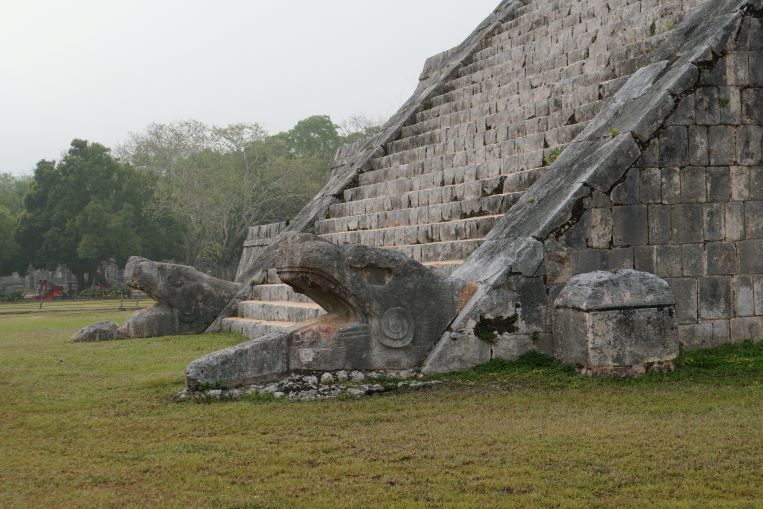
The Ruins of Chichen Itza, present to us what life might have been like back in the height of Mayan Civilization. Gazing at these incredible buildings leads us to wonder how they might have been constructed. As well as how they may have been used in ancient times.
Our Reasons To Visit Chichen Itza
Our reasons for visiting Chichen Itza were straightforward. First, it’s Chichen Itza one of the Seven Wonders of the World. Secondly, we have visited many Mayan Ruin sites in past travels, and I can not get enough of these fascinating historical sites. The overall experience is extremely humbling to see ancient history in front of you. Furthermore, how were these ancient civilizations able to achieve such greatness, and how the peoples of this time might have lived, and the struggles of their day-to-day life.
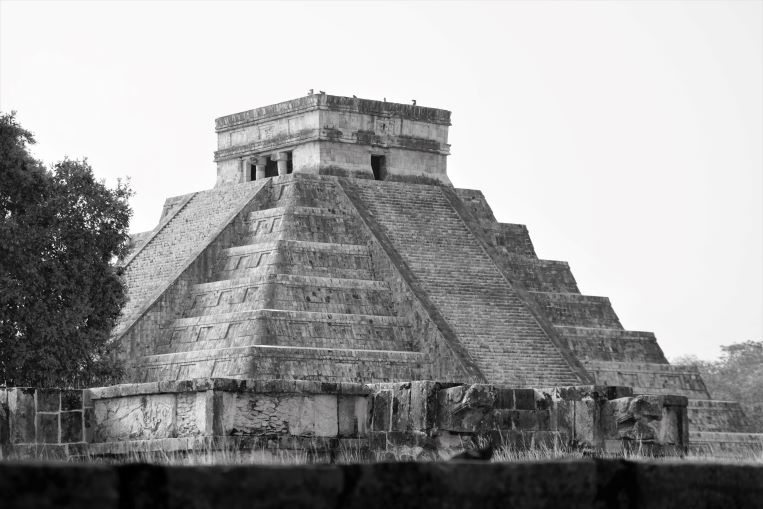
Ruins That We Have Experienced To Date
We have visited Tikal in Guatemala and found it amazing, situated in the heart of a Jungle. Tulum, situated on the coast, was, I believe, our first encounter with the Mayans. Coba, climbing the amazing Nohoch Mul pyramid standing at 140 ft. tall. Edzna near Campeche was incredible because there are few tourists, translating into having the place pretty much to yourself. Uxmal was unbelievable, open area that let you see the size of these ruins and the area they encompassed. Dzibilchatun, a site that easily accessible from Merida as it is just north of the city.
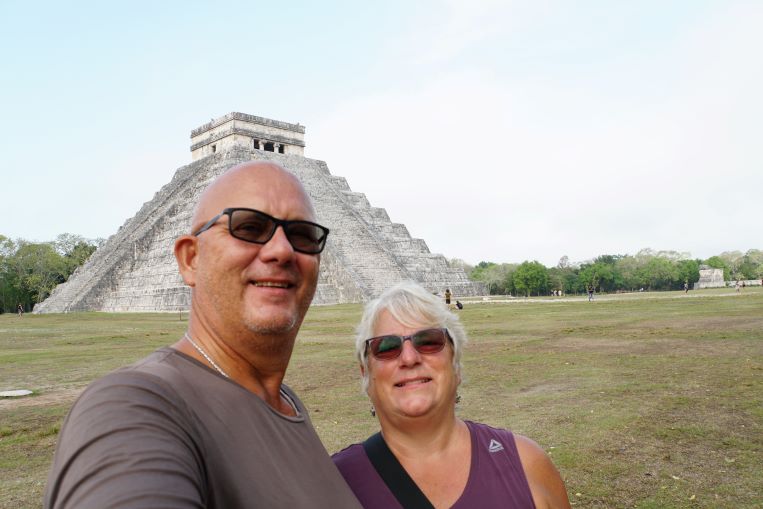
Given the opportunity, I believe everyone should experience history through face-to-face interaction rather than through a text book.
Getting To Chichen Itza
Chichen Itza is probably one of the easiest Mayan Ruins that you can visit. Given that there are many tours offered from almost everywhere in the states of the Yucatan (Merida, Progreso) or Quintana Roo (Cancun, Tulum, Playa Del Carmen). These tours can vary greatly from their itinerary to and from the ruins and the luxury levels provided. They all have in common that they all arrive at Chichen Itza between 9:30 & 10:00 by busloads. This makes for a very crowded experience, minimal time to explore, and a set schedule. This can make for a long and stressful day.
Travel Distance To Chichen Itza From
- Cancun 250 km or 154 miles each way
- Playa Del Carmen 155 km or 96 miles each way
- Tulum 126 km or 78 miles each way
- Merida 115 km or 71 miles each way
- Progreso 157 km or 97 miles each way
- Valladolid 45 km or 28 miles each way
You have several travel options available to you in your quest to get to Chichen Itza. Car rentals (not as scary as you might think), join a tour group (many different options within this choice), hire a private guide with transportation, and last, where possible, take the ADO bus (Cancun only, I believe), least expensive. Another option would be to stay in Valladolid or Pisté the night before and catch a Colectivo to Chichen Itza; although, you still need to get to Valladolid or Piste. Valladolid is a beautiful location with many cenotes and colonial history, so a nice extra here and definitely worthy of a visit.
If you opt to stay overnight somewhere, the positive is that you can arrive at Chichen Itza early when it opens and well ahead of the tour buses, and then stay well past the time the tour buses leave to return to the coast. This makes for a more enjoyable and relaxing experience.
Chichen Itza Entrance Fee
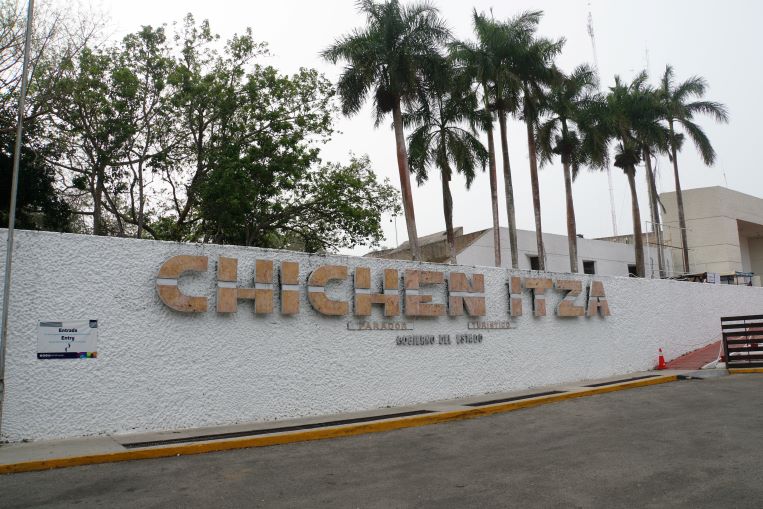
Chichen Itza Visiting Hours: Chichen Itza is open from Monday to Sunday from 8:00 am to 5:00 pm
General Admission: Adults $533 MXN, Child (3-12) $80 MXN, Mexican Citizens $237, Locals $80 (they do take Visa)
Parking 80-pesos
Free admission on Sundays for Mexican citizens and foreigners with residence in Mexico, ID is required.
Chichen Itza Night show (Chichen Itza Noches de Kukulkan) General admission, regardless of age or place of origin, will cost 600 pesos per person. Tickets can be purchased after 3:00 pm at the gate.
Tickets can be purchased online for Chichen Itza, through misc. distributors.
The archaeological site of Chichen Itza is open every day of the year between 8 am – 5 pm. Depending on your interest in Mayan history and architecture, you can spend anywhere between 2 hours to a day exploring these ruins. The site occupies an area of 6.5 sq km which means you need almost a day to see it all. For us, we spent 4hrs appreciating these ruins.
Chichen Itza Facts
- A UNESCO HERITAGE SITE and ONE OF THE NEW SEVEN WONDERS OF THE WORLD
- Believed to be over 1500 years old
- At its peak would have been home to 35,000 people
- Mayans Built Chichen Itza, the Toltecs contributed after they invaded Chichen Itza in the 9th century
- El Castillo Pyramid is 98 feet tall and you are no longer allowed to climb this Pyramid
- Chichén Itzá has one of the largest ball courts being 225 feet (66 meters) wide and 545 feet (168 meters) long.
- The term Chichen Itza means ‘the mouth at the well of Itza’. It is believed Itza means ‘water magicians’, deriving from the Mayan Itz for ‘magic’ and á for ‘water’.
- During the Spring and Autumn Equinox’s, sun rays create a shadow across the Kukulkan Pyramid that gives the appearance of a serpent slithering down the staircase.
- Clap once from one end of the Ball Court, it produces nine echoes in the middle of the court. We tried this one and got many echos
- Clap in front of the El Castillo (Kukulkan) Pyramid creates an echo resembling the song of the sacred Mayan Quetzal bird.
- The pyramid of Kukulkan has 365 steps in total – 91 on each side and one at the top. This equals the number of days in a year 365.
- The glory of Chichen Itza declined and the city met a mysterious end in the 14th century. It is believed poor weather and massive droughts may have lead to the mass exodus.
El Castillo (Temple of Kukulkan)
This wondrous structure that receives the most interest in Chichén Itzá is El Castillo (Kukulkan) Pyramid, also known as the Castle, which is located as soon as you enter this Mayan site. Unfortunately, it’s almost impossible to view or photograph this Pyramid without people present, it is nearly always crowded. However, this was our lucky day as we were the first people through the entrance gate, so we had plenty of opportunities to get some excellent pictures with no people in our shots. Otherwise, your best opportunity for pictures is early morning when the site first opens or late in the day just before closing.
Following 2008 you are no longer permitted to climb El Castillo; as someone fell to their death while climbing. Therefore, El Castillo is now fenced as a protection measure; that said, everything here at Chichen Itza is fenced off in one form or another. The fencing definitely takes away from the experience.
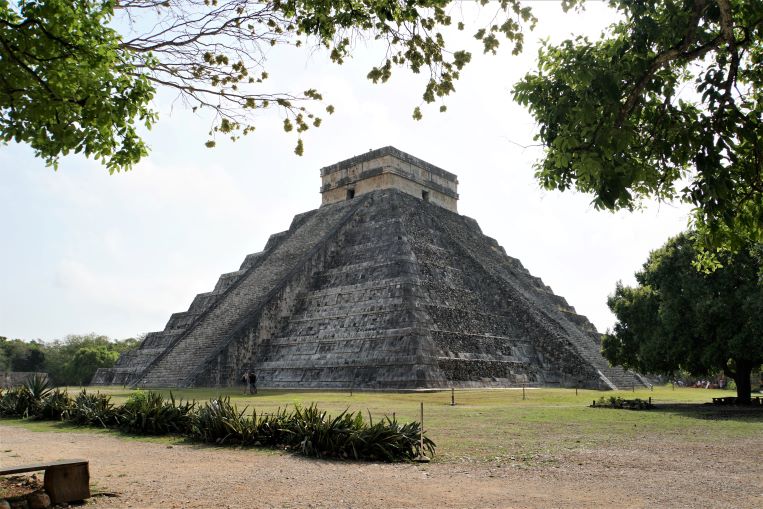
El Castillo Pyramid was constructed sometime between the 8th and 12th centuries AD. It is also believed this was after the Toltecs invaded. The Toltecs had a considerable influence over the construction of this structure. El Castillo pyramid served as a temple to the deity Kukulcán. The Yucatec Maya Feathered Serpent deity was closely related to Quetzalcoatl, a deity known to the AztecsEnormous carved serpent heads guard the pyramids at the base of the stairs.
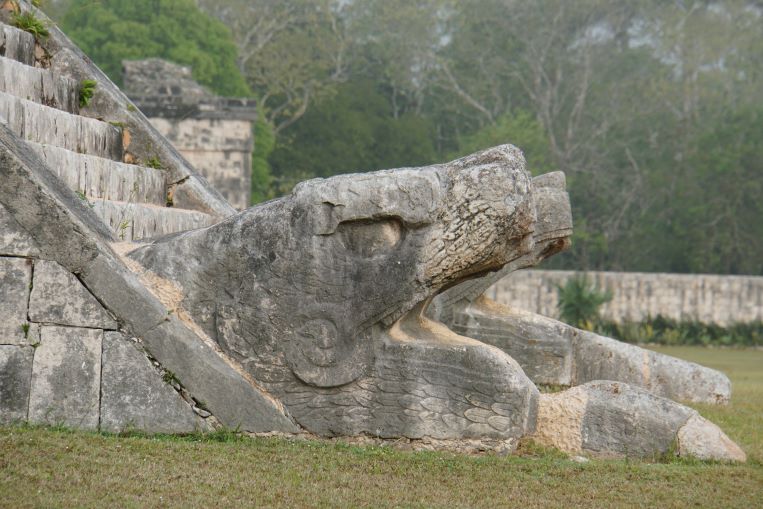
Kukulkan is the tallest temple at Chichen Itza, measuring 25 meters by 55 meters on its four sides. A staircase ascends to the Adoratory (room in a temple for the adoration of idols). Curiously, the sum of the stairs on the sides (91) plus that of the Shrine adds up to 365, the same as the number of days in the year.
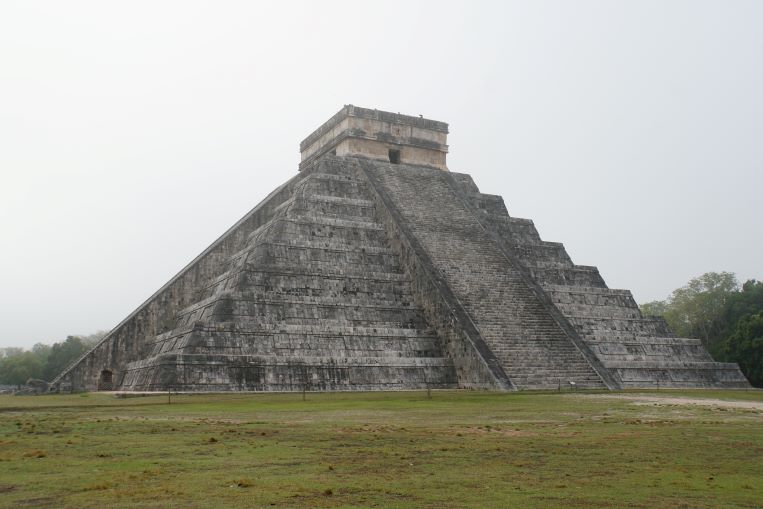
During the Spring and Fall equinoxes, an optical effect carefully calculated by the Mayans takes place. The reflection of the sun and the shadows from the corners of the pyramid recreate the north staircase to a crawling serpent, whose heads rest at the foot of the basement. In this way, the Mayans could calculate the calendar to use it in the harvests, reflecting astronomical knowledge. Far more advanced than that of Europe at that time.

The Temple of Kukulkan is a strong testimonial to Mayan love for astronomy. Each of the 4 sides consists of 91 steps which added together with the temple pediment make it 365, the number of days in a year. Furthermore, this pyramid does not stand there alone, within are two smaller nested pyramids.
Great Ball Court
Chichén Itzá has one of the largest ball courts at 70 meters wide and 168 meters long. Six sculpted reliefs run the length of the court’s walls, depicting the victors of the game holding the severed head of a member of the losing team. Chichén Itzá has several ball courts but smaller than this main court. Competitions that transcended sports were held since they had religious components in which the winning captain had the honor of being sacrificed to the gods. On the upper platform at one end of the court stands the Temple of the Jaguars. Inside is a mural showing warriors laying siege to a village. Standing on the temple platform to the north of the court, it is possible to hear a whisper from 46 meters away.




The ball court, shaped like a capital I either oriented north-south or east-west, represented the heavens. Players used their elbows, knees, and hips to knock a solid rubber ball weighing as much as 4 kg (9 lbs) into the opponent’s end of the court. The object was to hit the ball through one of two vertical stone rings (placed on each side of the court). The ball represented the sun (or moon or stars), and the rings represented the sunrise and sunset or the equinoxes. Extremely violent, the game often caused serious injury and, occasionally, death. In addition, human sacrifice was also part of the ritual surrounding Pok-Ta Pok. The ball game may also have served as a way to defuse or resolve conflicts without genuine warfare. Settle disputes through a ballgame instead of a battle

Tzompantli or the Skull Wall
Tzompantli structure is a large platform located near the ball court, whose most notable detail is the skulls reproduced that imitate the skulls of the prisoners. This gives this structure its namesake: “The Platform of Skulls.” This Platform gives the clearest testimony to the practice of human sacrifice carried out at Chichen Itza. The severed heads of the enemies were impaled on the Tzompantli as a symbol of victory.





The walls of the Tzompantli have carved beautiful reliefs of four different subjects. The primary subject is the skull rack itself; others show a scene with a human sacrifice; eagles eating all human hearts, and skeletonized warriors with arrows and shields.

Jaguar Temple
The Temple of the Eagles and Jaguars got its name from reliefs showing Eagles and Jaguars devouring human hearts. This Temple is the smallest of the set of structures that form “the grate level plane,” which includes: the Kukulkán Temple, Venus Temple, and the Great Ball Court. This Temple was built in a combination of Maya and Toltec styles, with a staircase ascending each of its four sides, the sides are decorated with panels depicting eagles and jaguars consuming sacraficed human hearts.




Temple of the Warriors
The Temple of the Warriors is an impressive stepped pyramid and was built by the Toltec, conquerors in the 10th century. Named after the warrior carvings that adorn the columns surrounding it. On the top sits the statue of Chac Mool – the messenger of God. This temple is a must-see when visiting Chichen Itza.






Group of the Thousand Columns
Group of the Thousand Columns located to the south of the Temple of Warriors. There are thousands of square and round columns that run through the plaza. Believed to have housed the city market, a steam bath, other civic and religious structures. A thatched roof of some sort probably covered these columns to protect them from rain and sun. Unfortunately, the roof no longer exists.





El Caracol
El Caracol translates to “spiral-shaped,” or, literally, “snail,” named after the winding staircase that rounds the central tower’s interior. The crumbling viewing tower of El Caracol rises above the lush jungle. Allowing ancient astronomers to have viewed the stars in 360 degrees, tracking solstices, equinoxes, and eclipses. Most interesting is the alignment of the remaining viewing windows, these seem to be designed specifically to track the appearance and disappearance of Venus in the night sky. Additionally, the Mayans were able to track the movements of Venus and thus measure longer intervals of the Earth’s orbit.






Cenote Sagrado (Sacred)
The Sacred (Sagrado) Cenote, “sacred well,”; alternatively known as the “Well of Sacrifice,” is a water-filled sinkhole. Located to the north of Chichen Itza’s civic precinct, to which it is connected by a 300-meter (980 ft) sacbe, a raised pathway. Mayans used this cenote to sacrifice humans as well as offer other treasures to the rain god Chac. The Sacred Cenote is approximately 60 meters (197 feet) in diameter; it drops 27 meters (89 feet) to its waters below.
Cenotes were gateways that served as vital gates between the earthly realm and the watery underworld. Through these gateways, the deceased passed, and from this, humans and deities were reborn. Water was sacred to the Mayas, it was believed that “Chac,” the rain god lived at the bottom of this cenote. Chac was feared and worshipped because he produced the drought and the life force of water.
Edward Herbert Thompson dredged cenote Sagrado from 1904 to 1910. Valuable and historic artifacts were recovered from his efforts. They included gold, jade, pottery, incense, and human remains that showed evidence of sacrifice, children, men, and women.
Cenote Sagrado is fenced off and swimming is strictly prohibited, not that one would want to.
Chichen Itza Tours
Depending on your choice, you can either do a self-guided or guided tour of Chichen Itza. Cindy and I prefer to take guided tours of the larger archaeological sites. Guides inevitably add personal theories and local myths to their narratives, making the experience even more enjoyable.
There are many tour options available that you can find online. Some combine a lot of other locations, Valladolid, Coba, Ek Balam, and cenotes. However, doing a lot in a day can be tiring, and you never have enough time at one location to truly enjoy it. So, make sure you choose wisely.
Our Visit To Chichen Itza
We left Valladolid at 7:30 in the morning as this would be a short 30 minutes drive to these ruins. Arriving at Chichen Itza shortly after 8:00 am after a short detour to see the down of Ek Balam (signage could be better). I believe that we were the first car in the parking lot. Taking a short walk down a path, you find yourself at the entrance to the ruins; here, you will find bathrooms, local guides, and the ticket booth. After paying our entrance fee of 456 pesos each, we entered the park; we decided to skip hiring one of the local guides.
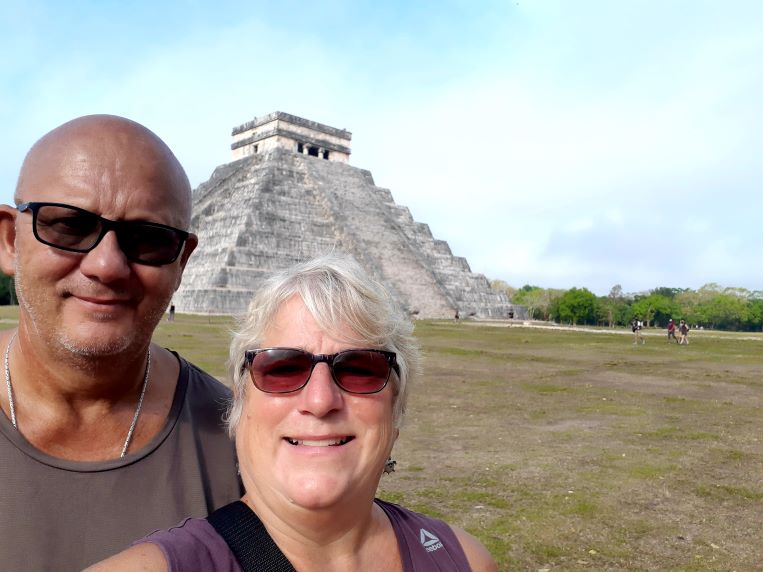
Just inside the park, you will find hawkers selling their wares; we pass, as we do not purchase souvenirs as our lifestyle does not afford such. Here you can purchase a paper guide for the ruins, which we did at the cost of 100 pesos for an English guide. Having a guide makes touring the grounds so much easier, with a map and writeups on some of the structures you will be seeing.
Experiencing Chichen Itza Mayan Ruins
Cindy and I have been to many Mayan ruins and would rate Chichen Itza near the bottom of our list, the fact that there are hundreds of hawkers selling their wears is a bit annoying. The other is that everything is roped off, there is no accessibility to anything. All other sites that we have been to always have some structures that are accessible to the tourist.
These structures at Chichen Itza are amazing to see but you are missing the interaction of not getting up and personal. As I have said if this is your only opportunity to see a Mayan ruin up close then I would recommend it as this is still a special experience.
Our list of Mayan ruins that we have had the pleasurer of experiencing are:
- Tikal In Guatemala
- Edzna In the Mexico state of Campeche
- Uxmal in the Yucatan
- Dzibilchaltun, in the Yucatan
- Tulum, in Quintana Roo
- Coba, in Quintana Roo
- Xcambo, in the Yucatan
- Ek Balam, in the Yucatan
Tips To Improve Your Chichen Itza Experience
- Go early in the morning or later in the day to avoid the crowds and the sun.
- Carry water (stay hydrated), sunscreen, and a hat. Wear light, cotton clothes.
- There are toilets at the main entrance plus others behind the main pyramid (a little hard to find and do not open till 9:30 ish). Always good to carry your own hand cleaner and a pack of tissues just in case.
- Take a walk around the Temple of Kukulkanour, you never know where you will get the best pictures from.
- These ruins are spread out, best to have comfortable walking shoes.
- Chichen Itza has lockers available at the entrance gate to store your extra things.

Final Thoughts On Chichen Itza
- Disappointed, Chichen Itza there is a lot of hype to visit as it is one of the wonders of the world, but feel there are better sites to visit.. Most structures here are amazing, but you lose so much by not being able to get up close and personal. We would not recommend Chichen Itza.
Our Positives
- The sheer size of this ruin is truly impressive.
- El Castillo (Temple of Kukulkan) is an amazing structure.
Our Negatives
- Hawkers everywhere selling their goods, thank god, not overly pushy.
- Structure signage could be improved.
- Everything here is roped off to the tourist; you can’t get within 10-feet of anything in most cases. Very disappointing.
- Cindy and I have been to eight Mayan sites from Tikal and most recently Ek Balam; I would rate Chichen Itza our least enjoyable experience. That being said, if you can only visit one Mayan ruin, Chichen Itza is better than not visiting any ruin, as Mayan ruins are amazing pieces of ancient history.
Would have, Could have, Should have
- We should have skipped this Chichen Itza, that being said we would have always wonder. Now we know, Chichen Itza is not worth the time or the money, There are better ruins out there to visit including Tulum and Coba near the coast. Tulum has a beautiful beach located at the ruin. Coba, climbing of temple Ixmoja at 42 meters is incredible with an awesome view looking over the top of the jungle.
Next Stop
We are basing ourselves out of Valladolid for about 14 days. We have visited Rio Lagartos and Ek Balam, we will be along with the many cenotes in the area, and of course the city of Valladolid itself. So please join us as we continue our adventures in this beautiful part of Mexico. After our stay in Valladolid will be off to Isla Mujeres before leaving Mexico to go back home to Canada.
Support Our Blog And It’s Unique Travel Content
You can support our site by using the links through our travel Essential. If you purchase items using our links, we will receive a small commission. There are no extra or hidden costs to you. These commissions assist us in our travel, so we can provide unique content to you through each blog post. If you enjoy our blog and find it interesting and informative please share it with friends. Subscriber, so you never miss a new post. Thank you.
Recommended Travel Essential
Cindy and I call ourselves nomadic so with this lifestyle, we use certain essentials to make this way of life easier and more comfortable. With this in mind, we have composed a list of what we feel are essentials and some tips you might use to plan or take your next travel adventure.
- Travel Packing Essentials to help organize and make this task less stressful
- Travel Safety Essentials to make your life on the road a little safer, giving you peace of mind
- Living Essentials to make life a little more comfortable, be this resting, working, or playing.
Accommodation Options While Traveling The World
- Booking.com is one of our go to’s when we are looking for a place to stay for a couple of days or longer
- Agoda.com we find is best to use when in Southeast Asia, but hey you never know what you might find
- Airbnb.com used to be our go-to but some of their cancelation policies are reasonable, give them a try as well
Travel Insurance
We always travel with some sort of travel Insurance be it just medical or complete trip coverage. We use Heymondo as we find their costs reasonable. Remember don’t travel and without coverage, the savings are not worth the possible costs.
Some links on this page are affiliate links, meaning if you buy a product using our link, we may earn a commission. This commission comes at no additional cost to you. Disclaimer.
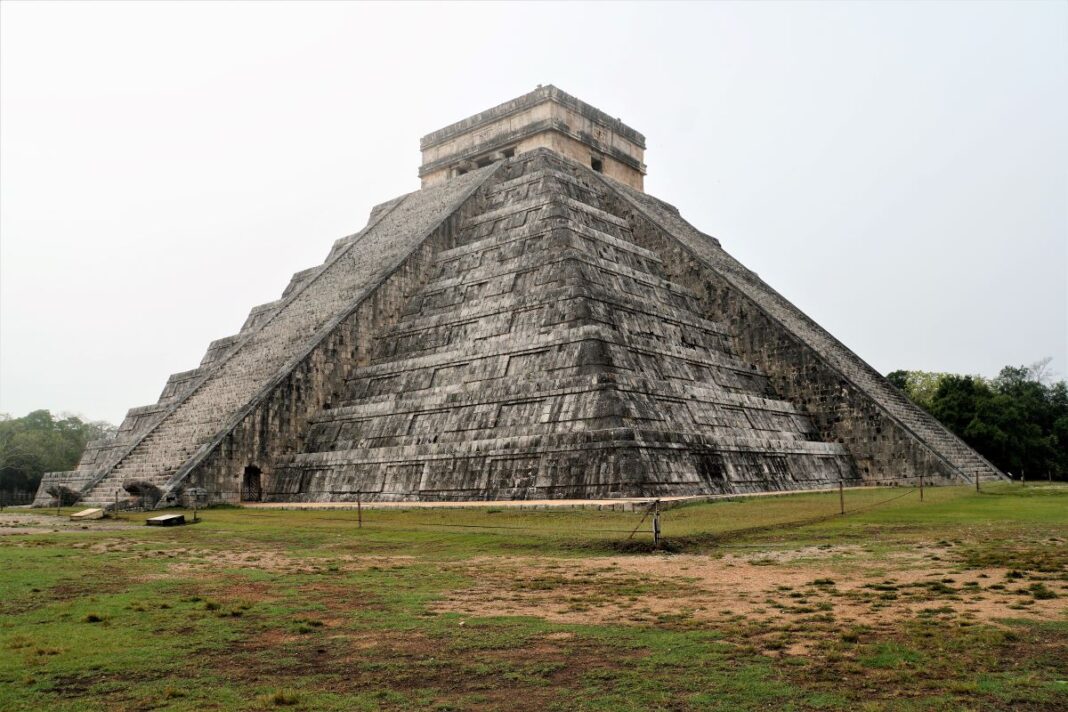






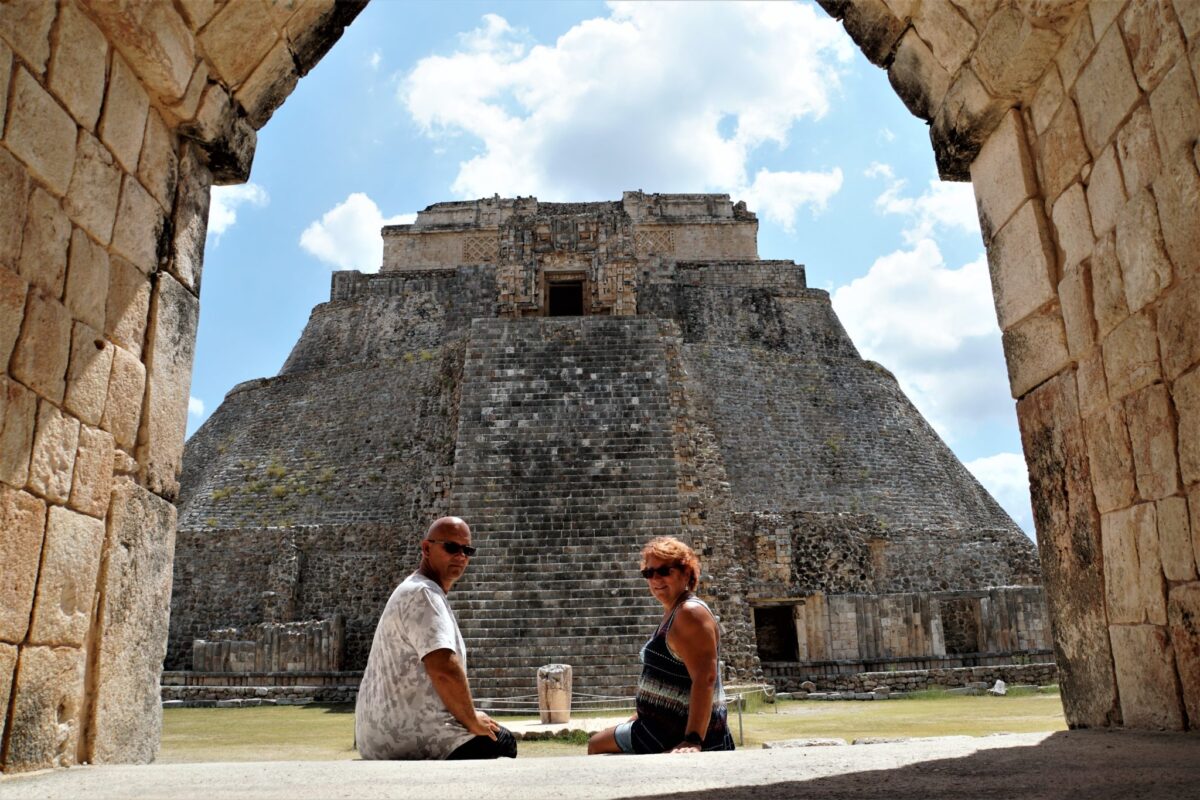
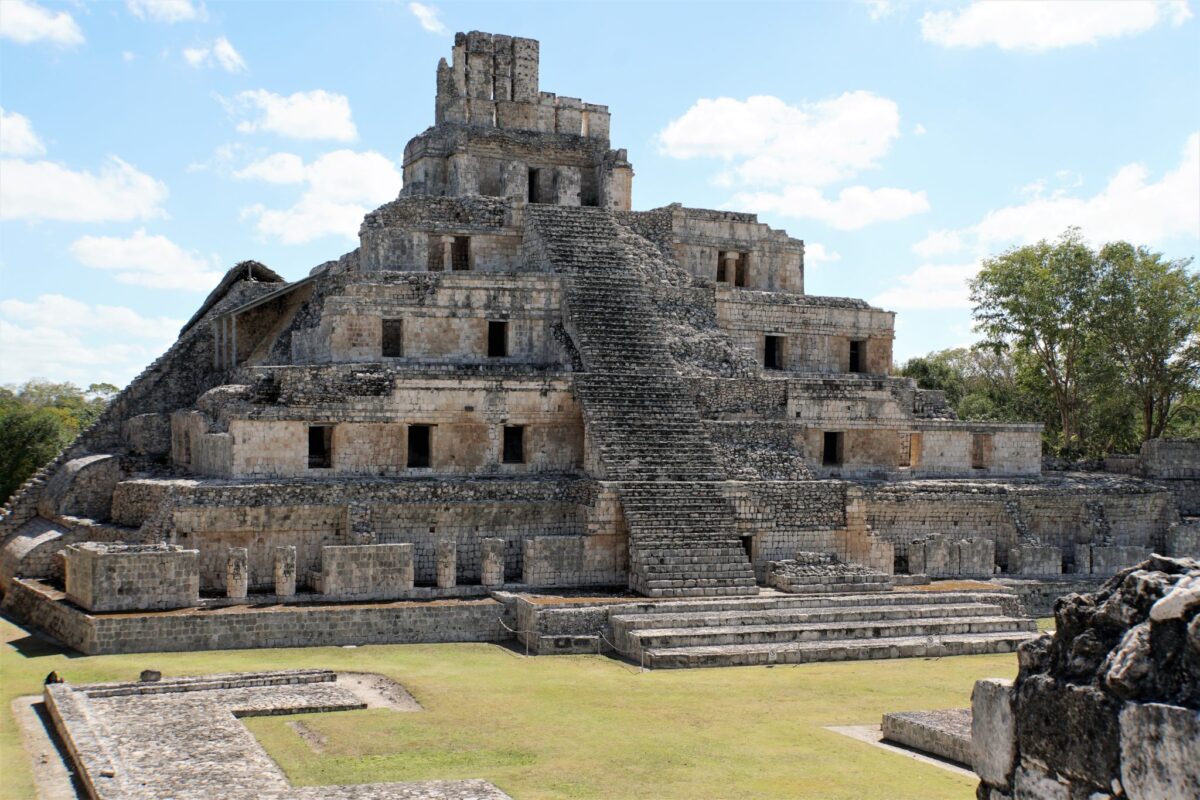
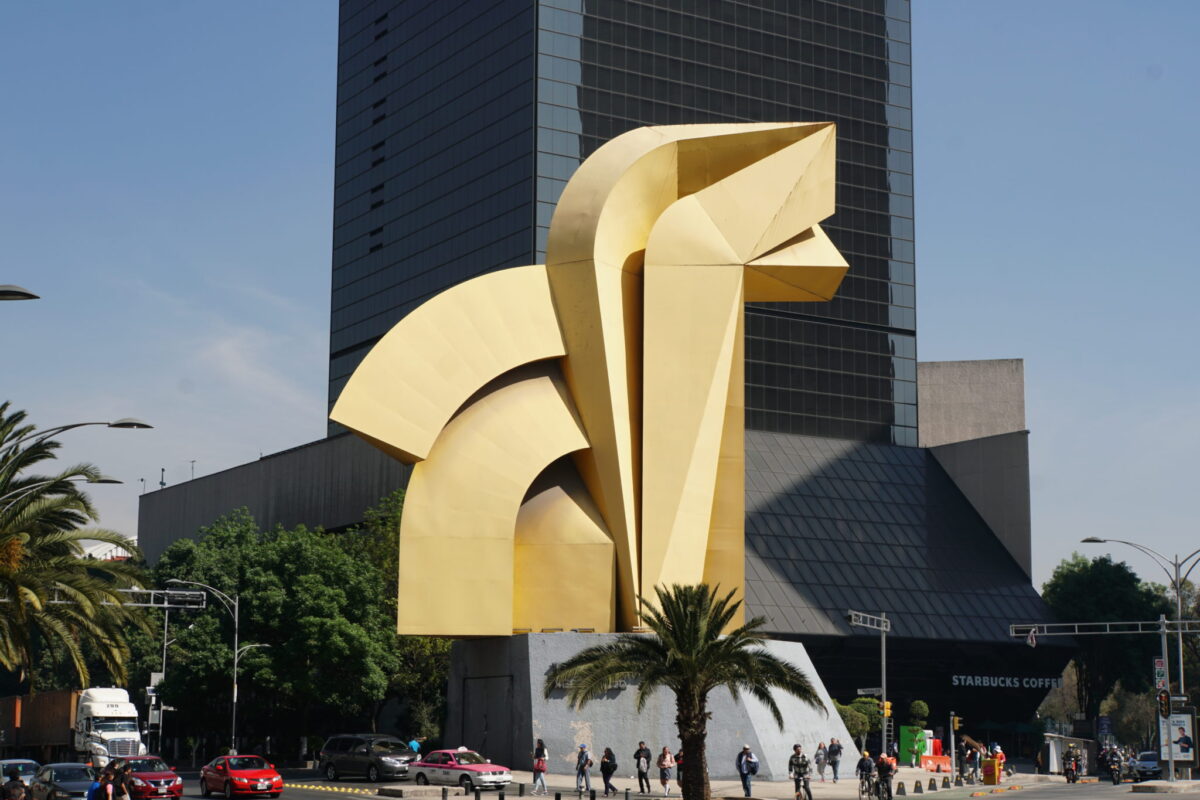
[…] One’s that do, use it more of a stepping-off point to other destinations in the area such as Chichen Itza or heading north to Rio Lagartos. But this colonial city is one of the most vibrant, authentic […]
[…] Another advantage of visiting Tikal is it is not as crowded as other Mayan ruin sites such as Chichen Itza or […]
Yes Tikal is a lot less crowded. I think a much more enjoyable experience